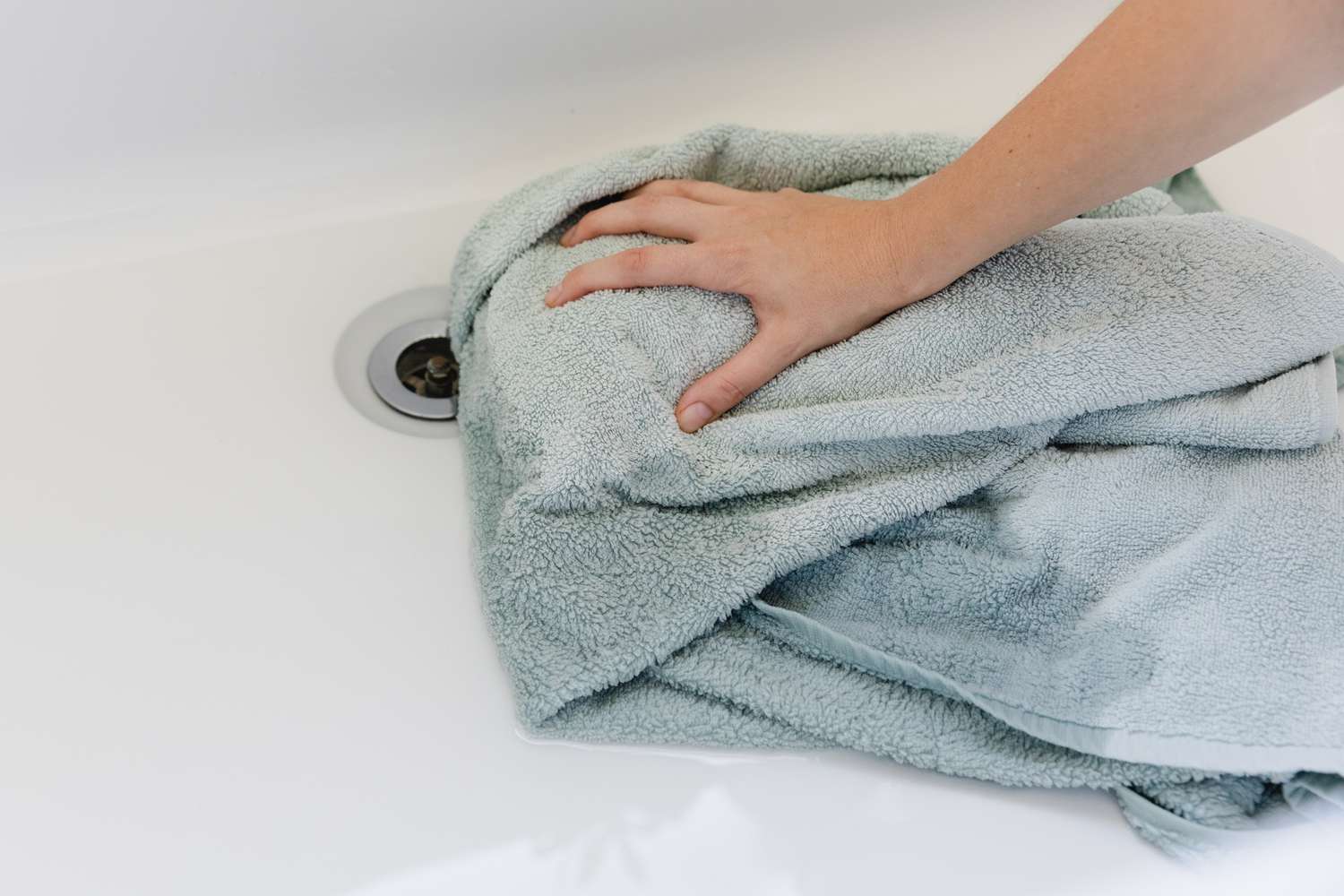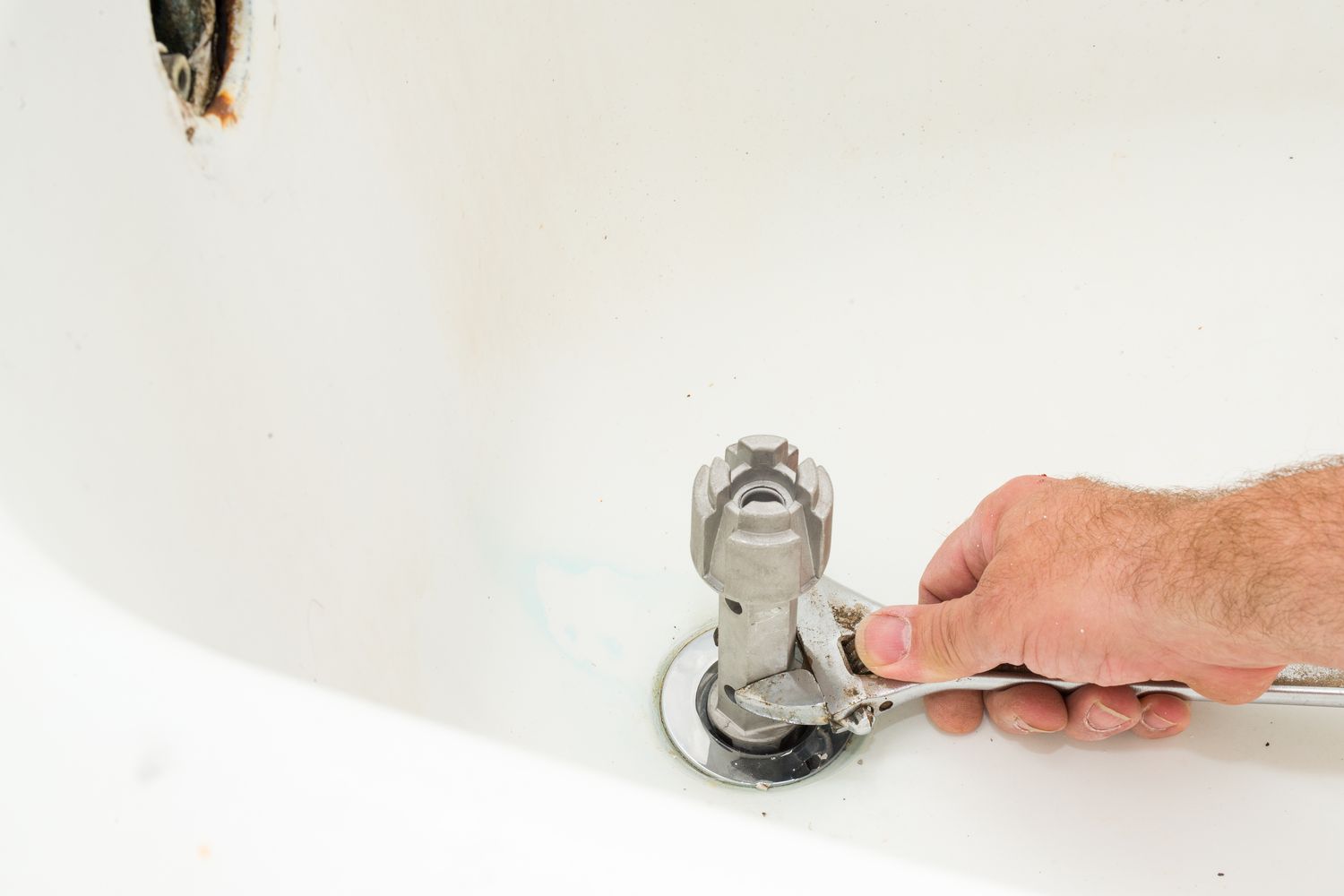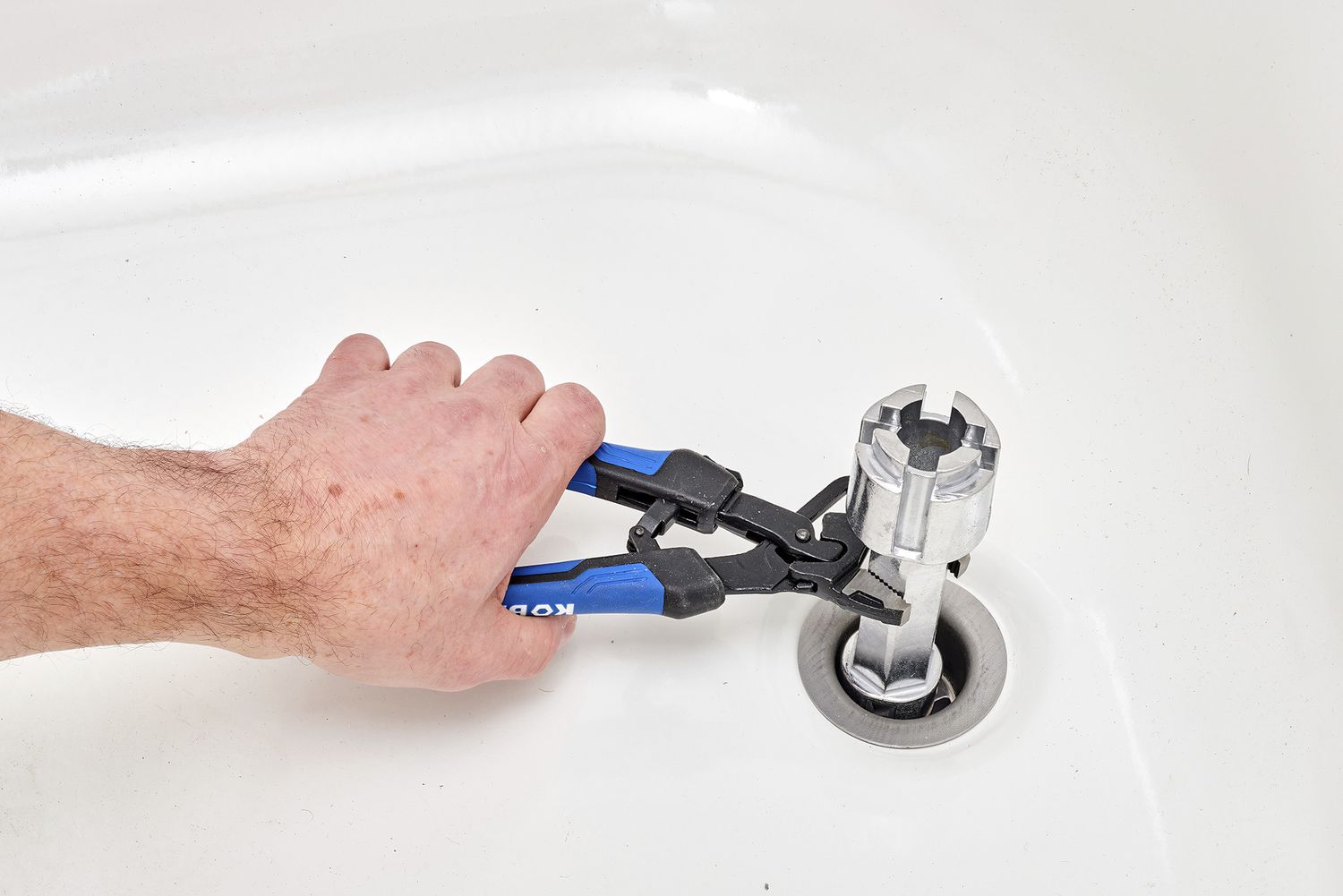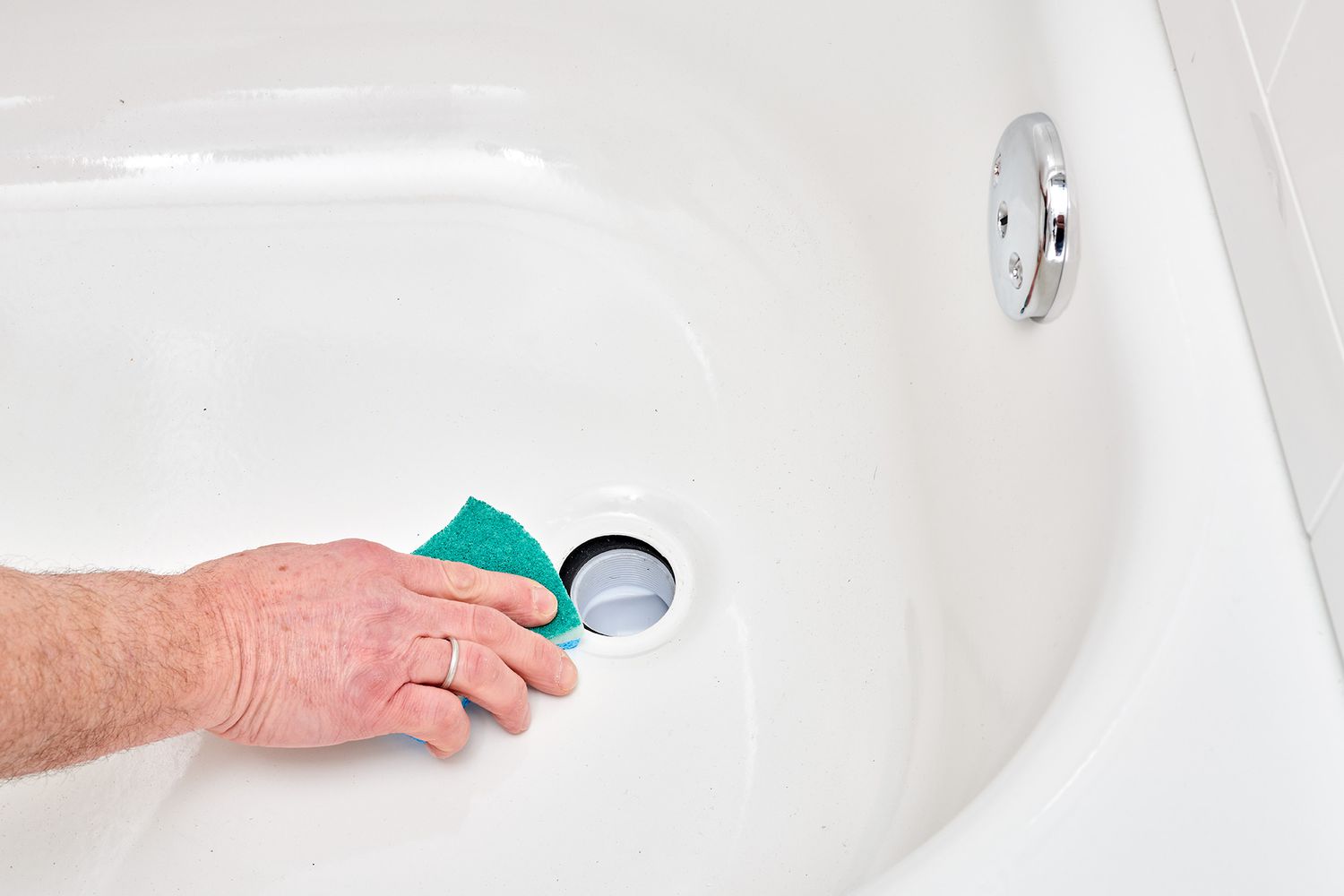How to Remove a Tub Drain With Basic Tools
The best substitute for a plug wrench is a set of needle-nose locking pliers. The pliers need to be small enough to reach into the drain and through the cross. Once the locking pliers are secured, you use a pair of standard pliers to turn the locking pliers and loosen the drain.
-
Remove the Tub Stopper or Screen
Remove the drain stopper or screen to access the tub’s drain fitting. If the tub has a screen, pry underneath it with a small flathead screwdriver to pop it off. Tubs with screens usually have a bucket or plunger stopper assembly that stops the water inside the drain pipe.
Credit: The Spruce / Kevin Norris
-
Remove an Inset Tub Stopper (Alternative)
If the tub has no screen, a stopper will likely be set into the drain opening. The removal method depends on the stopper type.
Stoppers that you open and close by moving the stopper itself usually unscrew from the drain or are secured with a set screw.
Stoppers that you operate with a lever on the overflow drain plate may have a metal rocker arm that extends through the horizontal portion of the tub drain pipe. Carefully pull the stopper and rocker arm from the drain.

Credit: The Spruce / Kevin Norris
-
Lock the Pliers on the Crossbars
Insert a pair of locking needle-nose pliers into the drain opening as far as the jaws will go. Make sure the jaws are on opposite sides of the crossbars, over the center of the “X.” Clamp the locking pliers so they grip the crossbars tightly.
Credit: The Spruce / Lee Wallender
-
Grip the Locking Pliers With the Standard Pliers
Grip the locking pliers with standard pliers, grabbing as low as possible on the locking pliers so that they do not interfere with the locking action.
-
Turn the Pliers
Turn the pliers counterclockwise. Be patient and go slowly. After a few rotations, the tub drain should be loose enough to set aside the second set of pliers and turn the locking pliers by hand.
-
Clear the Drain Opening
After removing the ring, press a small wad of paper towels or a rag into the drain hole. Carefully remove the ring of the plumber’s putty. Screw all of the putty away and rub the surface clean.

Credit: The Spruce / Michelle Becker
How to Remove a Tub Drain With a Plug Wrench
The best way to remove a tub drain is with a plug wrench. A plug wrench is a small wrench made of cast iron or steel that is milled to fit the crossbars of two or more different sizes of drains.
-
Remove the Drain With a Plug Wrench
Insert the end of the plug wrench into the drain opening so the tines on the wrench fit onto the crossbars of the drain. Most plug wrenches have more than one head size; use the head that makes a snug fit.

Credit: Jens_Lambert_Photography / Getty Images
-
Turn the Plug Wrench
Turn the plug wrench counterclockwise with a large adjustable wrench or tongue-and-groove pliers to loosen the drain. Unthread the drain by hand once it is loose enough.

Credit: The Spruce / Kevin Norris
-
Clean the Drain Opening
Use a flathead screwdriver or a putty knife and a sponge or rag to remove the old ring of plumber’s putty from around the drain opening. Try not to let the putty fall into the drain because it never breaks down and could start a clog.

Credit: The Spruce / Kevin Norris
Tips for Removing a Tub Drain
- Use heat: Heat helps to loosen old plumber’s putty. If the tub is very cold, gently blow warm air from a heat gun or a hair dryer over it for a few minutes to soften the putty before removing the drain.
- Buy a plug wrench: If you expect to remove your tub drain more than once, it will be worthwhile to purchase this inexpensive item. Also, because the head is form-fitted to the drain’s cross, there is less chance of accidentally breaking off the cross.
- Match the tub drain: If you’re replacing the old tub drain with a new one, take the old piece to the store to ensure you get the right replacement part.
- Use a tub drain extractor tool: If your drain doesn’t have crossbars, you’ll need to use a tub drain extractor tool. It has a conical shape, and helical knurls grip the metal wall inside the drain fitting. You turn the extractor with an adjustable wrench.
When to Call a Professional
If you cannot easily turn the tub drain, it’s best to call a plumber to avoid damaging it. You also risk the possibility of losing broken pieces down the trap. Unlike sink traps, which are easy to access and open up, tub traps are difficult to open up and access.
FAQ
-
How do you remove a clog in a bathtub drain?
The best way to unclog a drain is with chemical drain cleaners or hand tools like a drain snake, hair clog remover, or tong-like tweezers. An environmentally friendly chemical reaction to unclog a drain is one cup of vinegar and one cup of baking soda.
-
How do you remove a stuck bathtub drain stopper?
Try prying the stopper open with a flathead screwdriver or pliers. With pliers, you can grip the top and pull up or twist it counterclockwise. If it seems rusted shut, spray a lubricant like WD-40 around the seam and mechanically try to loosen it or pry it up.
-
How do you remove a push-pull drain stopper?
If the push-and-pull drain stopper has a separate stopper knob and lid, unthread the bolt from the drain crossbar with a screwdriver or set of pliers and lift the stopper out of the drain.
If the push-and-pull drain stoppers have a solid body, turn the drain stopper to the right (counterclockwise) to unthread the bolt from the crossbar and lift out the drain stopper.
Read the full article here
